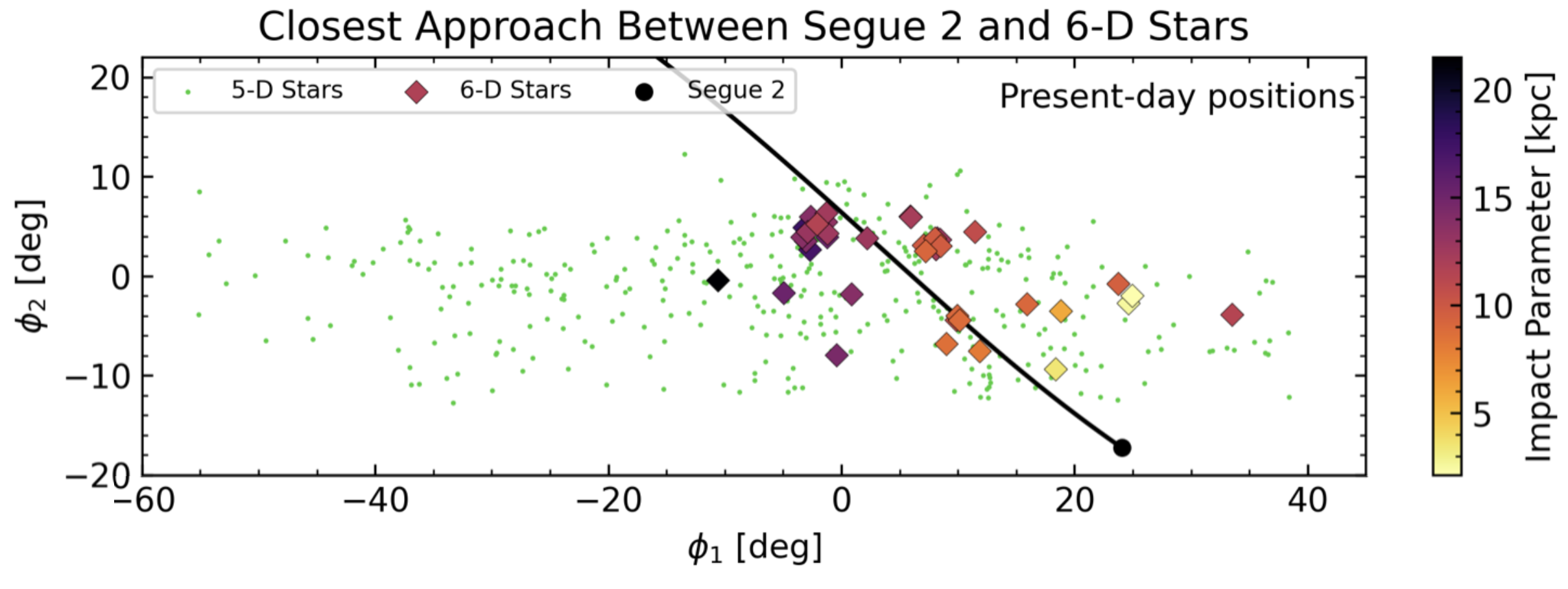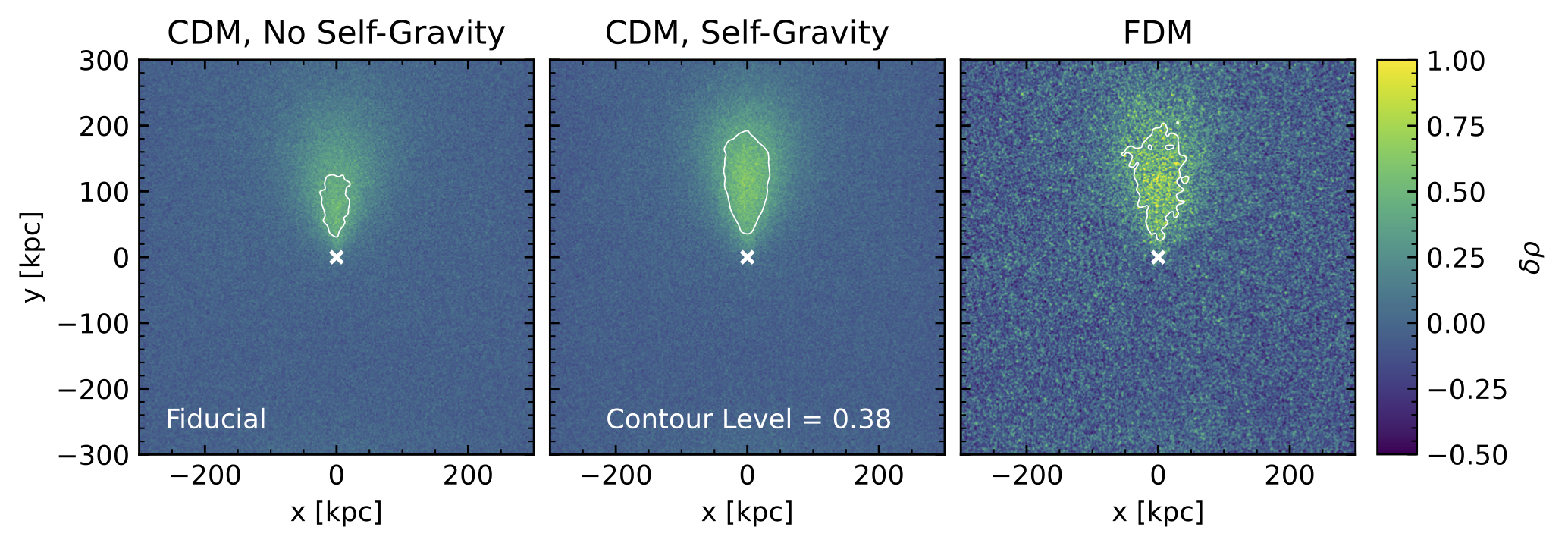Click here for a full list of my publications on ADS.
Selected Research Projects
Discovery of a Collision Between a Stellar Stream and A Milky Way Satellite

Closest approach between stars in the Cetus-Palca stellar stream and Segue 2, an ultra-faint satellite galaxy of the Milky Way. This plot shows member stars of Cetus-Palca and the position of Segue 2 as seen on-sky from Earth, in a coordinate system that is aligned with the stream's direction on the sky. Stream stars for which we have measured 3-D velocities (and therefore determined orbits) are colored by their closest approach distance to Segue 2.
Stellar streams are the destroyed remnants of globular clusters and dwarf galaxies that have been accreted by the Milky Way. One of the most promisiing avenues for constraining the amount of dark matter substructure in our Galaxy is to search for signatures of collisions between dark matter substructures and stellar streams. Modeling shows that by studying kinks, gaps, and other perturbations in stellar streams, we can characterize how clumpy the Milky Way's dark matter distribution is.
In this project, I modeled the orbits of Milky Way satellite galaxies and stellar streams, searching for evidence that a Milky Way satellite had recently collided with a stream, which would provide an important test-case for modeling interactions between streams and dark matter substructure. During the project, I discovered the first known interaction between a low-mass Milky Way satellite galaxy (Segue 2), and a stellar stream (Cetus-Palca). By assembling a member catalog of Cetus-Palca using data from Gaia, H3, and SEGUE, I conducted an orbit analysis of Cetus-Palca's stars, demonstrating that Segue 2 passed through the stream roughly 77 million years ago. Read more here.
Mapping the Dark Matter Wake Induced by the LMC

The density of the LMC's dark matter wake assuming three different models for dark matter physics. We compare cold dark matter without and with self-gravity to fuzzy dark matter with a particle mass of 1e-23 eV. The color shows the density contrast of the background "wind" dark matter particles as they move in the +y-direction past the LMC potential at the center of the box.
My Master's project was centered on the interaction between the Large Magellanic Cloud (LMC) and our own Milky Way (MW) galaxy. The LMC is the MW's largest satellite galaxy, and it has recently (cosmologically speaking) reached its first pericenter passage about 60 million years ago. As the LMC falls through the MW's dark matter halo, its gravity attracts the MW's dark matter to it, forming an overdense region in the MW's halo which traces the path of the LMC's orbit. This gravitational "wake" pulls back on the LMC and slows it down in a process called dynamical friction.
The nature of dark matter remains one of the most pressing mysteries in astronomy. The LMC's wake is a promising observable for distinguishing between competing dark matter models, as the strength and morphology of the wake depends on the microphysics of the dark matter particle. In the project, I created a suite of windtunnel-style simulations studying the formation of the wake in cold (CDM) vs. fuzzy (FDM) dark matter. While the CDM and FDM wakes are similar in size, the fuzzy dark matter wake is dynamically colder than the cold dark matter wake. Furthermore, we found that the dark matter wake's gravity strenghtens the formation of a wake in the Milky Way's stellar halo, providing an observable signature of the dark matter wake. The stellar wake is also slightly hotter in an FDM universe compared to a CDM universe, offering a plausible avenue for distinguishing CDM from FDM. Read more here.